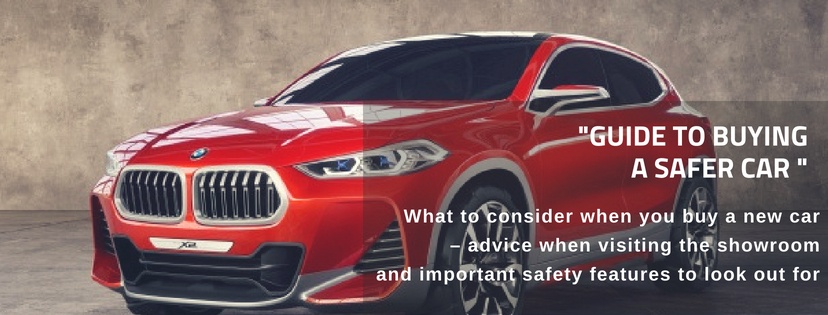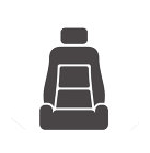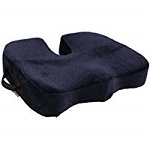Guide to Buying a Safer Car

The Consumer Right to Safety
Consumers have a universal right to be safe. The United Nations has declared there should be minimum safety standards for vehicles in all countries. The Brasilia Declaration on Road Safety, adopted by the UN in April 2016, encourages governments to:
‘Promote the adoption of policies and measures to implement United Nations vehicle safety regulations or equivalent national standards to ensure that all new motor vehicles, meet applicable minimum regulations for occupant and other road users protection, with seat belts, air bags and active safety systems such as anti-lock braking system (ABS) and electronic stability control (ESC) fitted as standard.’ Brasilia Declaration.OP20.
Unfortunately, many governments around the world are yet to sufficiently regulate car safety. Consumers need to ensure the vehicles they buy provide an adequate level of protection.
Safety features to look for
Car safety features are split between those that can help prevent accidents (primary safety features) and those that can reduce the chance of death or injury if an accident occurs (secondary safety features).
-
Electronic stability control (ESC)
ESC is the most significant advance in vehicle safety since the introduction of the seat belt and one of the most important crash avoidance systems available – tests have shown it could prevent up to a third of all crashes. Since its introduction in Europe it’s estimated to have saved 6,100 lives. It helps stop drivers losing control if a car starts to skid or when there’s a need to take sudden evasive action (such as swerving to avoid an obstacle). Sensors in each wheel detect the start of a slide and small amounts of braking are automatically applied to individual wheels to regain stability and bring the car back under control. This feature is commonly known as ESC, but confusingly different manufacturers often have their own acronym for it – ESP, ESC, ASC, DSC, VSC, VSA and others are all used. Ask your car dealer if you are unsure whether a car has this vital feature.
-
Electronic Brake-force Distribution (EBD)
Electronic brake-force distribution automatically varies the amount of brake-force applied to each of a vehicle’s wheels to maximise stopping power. Factors such as road conditions, speed and differing grip mean that not all wheels need equal braking. EBD establishes the optimal brake-force balance helping to bring a car to a halt swiftly, safely and in a straight line.
-
Brake Assist (BA)
Brake assist helps drivers come to a stop more quickly during emergency braking. Tests show that when making emergency stops, many drivers don’t press the brake pedal fast enough or hard enough to make full use of a car’s braking power. Brake assist recognises the signs of an emergency braking situation and automatically provides drivers with extra brake support.
-
Autonomous Emergency Braking (AEB) and collision avoidance systems
These advanced systems use cameras and radar to detect when an object is ahead and an impact is likely. Some cars will initially use audio visual warnings to alert the driver and prime the brakes for action. Others with full AEB will automatically brake the car if the driver fails to intervene to prevent (or lessen the impact of) a collision. Studies have shown that full AEB leads to a 38% reduction in rear-end crashes.
-
Seatbelts
Seatbelts save lives and must be worn by both front and rear seat passengers. In a crash you’re twice as likely to die if you don’t. Always wear a seatbelt, even on short, familiar journeys or the consequences could be fatal. And wear your seatbelt correctly so it gives you the best possible protection in a crash.
Seatbelts drastically reduce the chance of death or injury and modern seatbelts have further enhancements to improve their effectiveness. Seatbelt pre-tensioners take up any slack in the belt when they detect that a crash is imminent. Load limiters help prevent injury by allowing the belt to stretch slightly as a crash takes place reducing the peak load that is placed on the passengers’ bodies.
-
Airbags
Airbags can make a major difference in reducing or preventing serious injury in a crash. Sensors inside the car monitor its deceleration and in a crash situation will trigger the firing of the airbags to cushion any impact between the occupants and the car’s interior.
In general, the more airbags a car has the better. Front airbags help in head-on crashes, but seat- and door-mounted airbags help protect the pelvis, chest and abdomen in a side-on impact, while curtain airbags Secondary safety features 1 2 Guide to buying a safeR car 7 drop down from the roof lining to protect passengers’ heads. More recently knee-level airbags have been introduced to prevent potential injuries to front-seat occupants caused by lower-level parts of the car’s interior, such as the steering column.
More modern dual-stage airbags include sensors that can trigger different responses depending on the crash severity, inflating for example, less rapidly in lower speed impacts. This reduces the chance of the airbag actually causing an injury itself, while still providing adequate protection.
-
Head restraints
Head restraints are designed to prevent whiplash injuries, but to be effective they must be well-designed and adjusted correctly for the height of the occupant – the top should sit level with the top of a person’s head, and the head should be no more than an inch away from the restraint when the occupant is sitting comfortably. Some cars now employ active head restraints which actually move forward in a crash situation to better support the head and neck and mitigate the effects of whiplash injury.
DO YOUR HOMEWORK
It’s important not to only rely on the information provided by car dealerships – their main priority is to sell you a car and may only provide partial or potentially misleading information in an attempt to convince you to part with your cash.
Before you set foot in a dealer’s showroom there’s some research you can do to check out a car’s safety credentials.
NCAP crash test results
The Global New Car Assessment Programme (Global NCAP) is an organisation that crash tests many new cars launched around the world and provides a comprehensive safety rating based on a vehicle’s ability to protect both its occupants and pedestrians in the event of a crash.
It provides star ratings (with five stars being the highest standard) for the following categories:
1) Adult occupant protection – this score is determined from frontal impact, side impact and whiplash tests to evaluate the protection of adult driver and passengers.
2) Child occupant protection – this covers three aspects: the protection offered by the child restraint systems in frontal and side impact tests; the vehicle’s ability to accommodate child restraints of various sizes and designs; and the availability of provisions for safe transport of children in the car.
3) Pedestian protection – this score is determined from tests to the vehicle’s front-end structures such as the bonnet, bumper and windscreen. The potential risk of injuries to pedestrian head, pelvis, upper and lower leg are assessed.
4) Safety assist – this score is determined by tests on the most important driver assist technologies (outlined above) that support safe driving by avoiding accidents and mitigating injuries.
Global NCAP had many regional sub-organisations that deal with the cars released in different parts of the world. India doesn’t yet have its own NCAP safety programme, but the government has committed to launching the The Bharat New Vehicle Safety Assessment Programme (BNVSAP) over the next few years. This will provide safety ratings for Indian vehicles.
Global NCAP has also launched the Safer Cars for India campaign in association with the Delhi-based Institute of Road Traffic Education (IRTE). This aims to reduce the 130,000+ lives lost each year in Indian road traffic crashes.
Additionally, the Consumers’ Association of India website (www.caiindia.org) carries regular report and news updates on car safety matters.
CASE STUDY
Mohd Arif
Mr Arif was driving near Vijayanagar when a dog jumped out in front of his Hyundai i10, forcing him to swerve and crash into a ditch. His younger brother sustained serious injuries to his eye, for which he continues to receive treatment months later.
The emotional impact of the crash was felt by the whole family. “It affected us badly, it was a big shock for us all, people from the village came to see us”, says Mr Arif, “People are so scared that they are not ready to sit in the back seat of a car.”
Mr Arif does not understand why car safety differs so much depending on which country you are in.
“What can I say! Regarding safety, what is the difference between us and the people outside? The blood is the same. Whatever facilities they are providing to other people, should be given to us also.”
TOP TIPS WHEN VISITING A DEALER
When visiting a car showroom it’s important to be well-prepared. Here are our top five tips for buying a safe car that’s right for you:
Be aware that the safety features you’ve seen advertised may not be available on cheaper, lower-specification versions of a car. Take a list of the important safety features you want fitted and ask specifically whether they are available.
Don’t be baffled by terminology or acronyms you don’t understand. If something’s not clear, ask for clarification – it could save your life.
Take your children and their child car seats with you to make sure they can all fit safely in the vehicle.
Ask for a written confirmation of the specification you’ve ordered and check that it matches when the vehicle arrives. Ask your dealer to talk you through each of the safety features and explain how to use them.
The test drive is crucial Check you can adjust the seats, steering and head restraints to suit you and your passengers. Can you reach all the controls and read all the instruments? Can you see all round the car or do window pillars block the view? Does the car feel right for you and do you feel in control? If you’re unsure about any of these aspects it will compromise your safety.
CHILD CAR SEATS
Using a child car seat can prevent your child suffering severe injuries in the event of a crash. However, it’s important to choose the right type of child car seat and fit it correctly.
Child car seats are designed specifically for certain weights and age ranges and it’s important to move up through the range as your child grows.
 |
Group 0/0+ |
| rearward facing | |
| up to 13kg | |
| typically birth to 15 months | |
 |
Group 1 |
| front facing | |
| 9-18kg | |
| typically 9 months to 4 years | |
 |
Group 2 |
| front facing | |
| 15-25kg | |
| typically 3 to 6 years | |
 |
Group 3 |
| front facing seat or booster cushion | |
| 15-35kg | |
| typically 5 to 11 years |
The weight groupings overlap, so it’s best to leave your child within each seat until they reach the top of the weight range before moving up. Never fit a rearward facing car seat in a position where there’s an air bag as it could severely injure the child if it activates in a crash.
When buying a child car seat it’s vital to take along the car you’re going to be using it in to make sure it fits. You should also make sure it will fit in any other car you’re likely to use it in, such as a grandparent’s or child minder’s. Some manufacturers’ websites list what cars their seats are expected to fit in, so it’s worth checking beforehand. If you are transporting more than one child make sure that all the car seats will fit alongside in your car – bring any existing car seats with you to try them out.
Check whether your car has Isofix mountings. These are a standard type of fitting which means you can fit a car seat without the use of a seatbelt. Isofix seats with three attachment points are the most secure. Isofix seats are not necessarily safer, but they do make child car seats easier to fit, so there’s less danger of installing them incorrectly.
Never buy a child car seat second-hand, it may have been damaged in a previous crash or have suffered excessive wear and tear or misuse.
CASE STUDY
Harvinder Ridhlan Dwarke More, New Delhi New Delhi
Five of Harvinder’s relatives were making their way to a wedding in a Maruti Ritz, when the driver lost control when braking and crashed into a ditch, killing two passengers instantly. Of the three survivors, one received serious lacerations to the head requiring 64 stitches, and another received injuries to his hand that may stop him from ever working again.
Apart from the devastating emotional impact of losing two young men, the family are also faced with the challenge of paying for ongoing medical treatment at the same time as losing the income from those who died.
Harvinder thinks that car manufacturers should install basic safety features like airbags in all models, including the small cars that poorer families are more likely to rely on. He also thinks that the government must take action.
“I would like to give this message to the Government; that car safety features should be there in every car.”
Summary
The key safety points to remember when buying a new car:
- Understand what the key safety features are and which ones you’re looking for
- Do your homework before buying – check out key websites such as NCAP crash test results and other local resources
- When visiting a dealer, make sure the car you order has the safety features you need and use the test drive to ensure the car is right for you and your family
- If carrying children always use a car seat that’s appropriate for their age and ensure that it’s fitted correctly
Published by
Consumers International in 2016
Consumers International 24 Highbury Crescent London, N5 1RX, UK
This guide to buying a safe car was made possible by funding from Bloomberg Philanthropies. Consumer VOICE is a member of Consumers International and is campaigning for Safer Cars in India.
About Consumers International
Consumers International (CI), working together with our 240 Members in 120 countries, is the only independent and authoritative global voice for consumers. Together we ensure consumers are treated safely, fairly and honestly. We strive to put them at the heart of the practices of global corporations and influence international bodies such as the UN, OECD and G20 to act in their interest. CI is a not-for-profit company limited by guarantee and registered in the UK (company no. 4337865). We are also a registered UK charity (no. 1122155).
